Caerphilly |
|
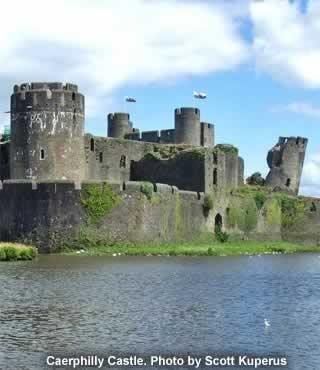 |
|||
A town near Cardiff, with the largest castle in Wales |
||
Listen to this article |
||
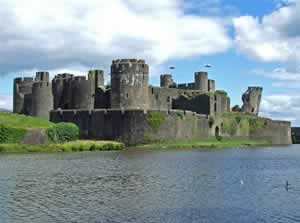 Caerphilly Castle Photo by Scott Kuperus |
||
Caerphilly is the largest castle in Wales, and the second-largest in the whole United Kingdom. It is only trumped in size by Windsor Castle, the Queen's residence. |
||
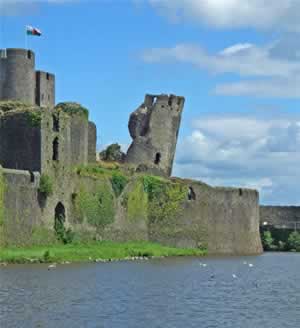 Photo by Scott Kuperus |
||
This huge fortress was built in the 13th century by an English lord called Gilbert de Clare. He had become involved in a dispute with the Welsh Prince Llywelyn, over the ownership of some land in the south of Wales. In order to protect what he believed was his territory, de Clare set about constructing one of the most imposing castles to have ever been built. Llywelyn attacked the building site, realising the huge power that the castle would have, but he was unable to stop its completion, and he soon retreated to the north. |
||
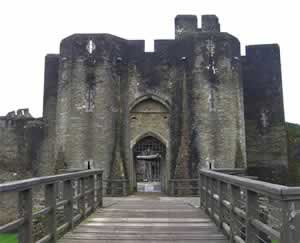 The entrance to Caerphilly Castle Photo by mark.hogan |
||
In those days, many castles were built upon the sites of former strongholds. Caerphilly was different in that it was constructed on a brand-new site, meaning that its architects were free to develop any layout they wished. They certainly made the most of this opportunity, with one of the most innovative castle designs in history. The biggest of their ideas was to dam a nearby river, which flooded the area, and created an artificial lake. The castle stood in the centre, on a man-made island, with the water acting as a huge moat. These water defences were unrivalled anywhere in Europe. |
||
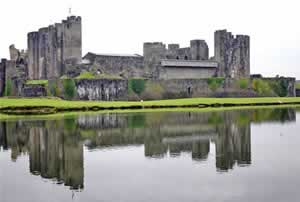 Caerphilly Castle and its Lake Photo by ikea riot |
||
Caerphilly also utilised a concentric design, which means that its towers and walls were usually surrounded by other towers and walls, creating several layers of stone. In order to successfully penetrate the castle, attackers would have had to overcome all of these barriers, while under constant attack. This led to many military experts classifying the castle as impregnable. |
||
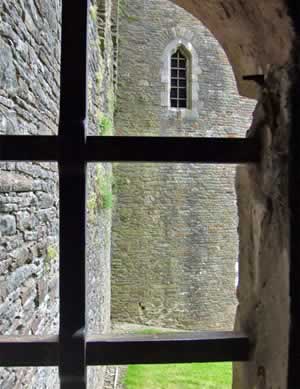 Looking out of one of the windows of Caerphilly Castle Photo by Scott Kuperus |
||
Caerphilly saw lots of combat over the years, and this gradually resulted in the degradation of the castle. In the present day it is mostly a ruin, but it has benefited from some recent restoration work. Impressively, this included the re-flooding of the artificial lakes, which had become empty. The building and grounds are now in the possession of Cadw, the Welsh version of the National Trust. |
||
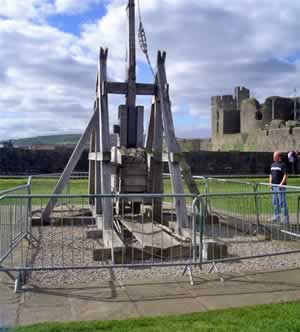 A medieval Siege Engine in the grounds of Caerphilly Castle Photo by Scott Kuperus |
||
Despite all this careful attention from the restoration workers, nothing could be done about one of the castle's damaged towers, on the building's south-eastern corner. It leans dangerously to one side, looking like it might fall at any moment! This has become one of Caerphilly's most iconic features. The tower here leans even more dramatically than the Leaning Tower of Pisa, in Italy. |
||
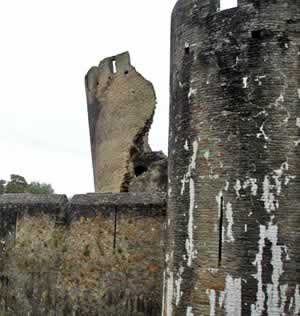 Leaning Towers at Caerphilly Castle Photo by justinfeed |
||
Today, thanks to the careful conservation work, the castle is open to the public, all through the year. Its rooms and grounds contain lots of interesting sights, including four replica siege engines, which are in full working order! |
||
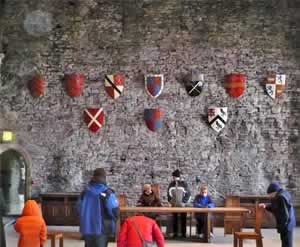 Inside Caerphilly Castle Photo by Steve and Ruth Bosman |
||
The castle truly comes to life every July, when Caerphilly town hosts its annual Big Cheese festival. This cultural extravaganza includes historical re-enactments, folk dancing, and other entertainment that relates to the castle's past. The festival also includes a huge funfair, a wide array of music, and countless other events. |
||
 The Big Cheese Photo by Watt Dabney |
||
If you find yourself particularly awed by Caerphilly Castle, then you might be interested to hear that its Great Hall is available for hire. It is even licensed to perform weddings! |
||
|
||
Caerphilly Castle is open daily, 9am to 5pm (11am to 4pm in winter). Entry costs around £4. Caerphilly Castle, CF8 1JL. Tel: 02920 883143 |
||
|
Pocket Britain is optimised for use on a smartphone or tablet with internet access. All content is subject to copyright. All reasonable methods have been used to ensure information supplied is accurate at the time of publication. However, it is advisable to check information before relying on it. Privacy Policy |